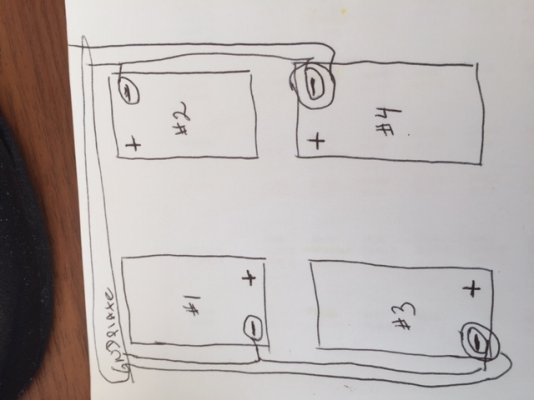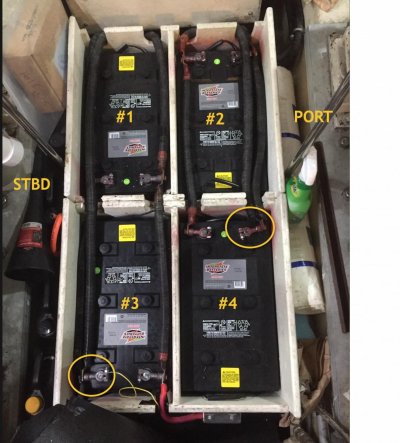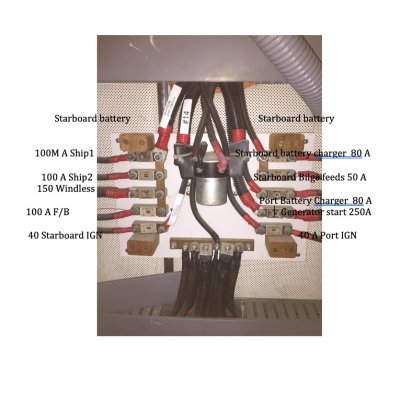The Brockerts
Senior Member
- Joined
- Oct 17, 2014
- Messages
- 246
- Location
- USA
- Vessel Name
- Moonstruck
- Vessel Make
- 1990 Californian/Carver 48 MY
New Start/House Battery setup….using KISS
I was going to the setup that Mike H. has on his Californian for the factory installed 4 8D batteries on my Californian. This change should only require a simple cable change. See thread and pictures below.
The basic setup is 2 8D’s for Port Engine and Generator, 2 8D’s for Starboard and House. Mike setup is 1 8D for Port and Generator, and 3 8D’s for Starboard and House.
I have a parallel Battery Switch at the Helm(tested and works) for the case where I run down the start/house back and can’t start the Starboard bank.
I don’t hang out much but would like the extra capacity since I’ve added and inverter/charger to run a refrigerator
In reviewing the current configuration, (see Pictures) I noticed that each battery has it’s own ground even though each bank is wired in parallel.
The reason for this extra ground wire is ?
So if I disconnect battery #4 and reconnect it in parallel to battery bank 1&2, should I add the additional ground connection too for the third battery ?
.
https://www.trawlerforum.com/forums...use-batteries-58401-post1012223.html#poststop
The Brockerts
Engine Batteries and House Batteries - Trawler Forum
I was going to the setup that Mike H. has on his Californian for the factory installed 4 8D batteries on my Californian. This change should only require a simple cable change. See thread and pictures below.
The basic setup is 2 8D’s for Port Engine and Generator, 2 8D’s for Starboard and House. Mike setup is 1 8D for Port and Generator, and 3 8D’s for Starboard and House.
I have a parallel Battery Switch at the Helm(tested and works) for the case where I run down the start/house back and can’t start the Starboard bank.
I don’t hang out much but would like the extra capacity since I’ve added and inverter/charger to run a refrigerator
In reviewing the current configuration, (see Pictures) I noticed that each battery has it’s own ground even though each bank is wired in parallel.
The reason for this extra ground wire is ?
So if I disconnect battery #4 and reconnect it in parallel to battery bank 1&2, should I add the additional ground connection too for the third battery ?
.
https://www.trawlerforum.com/forums...use-batteries-58401-post1012223.html#poststop
The Brockerts
Engine Batteries and House Batteries - Trawler Forum



